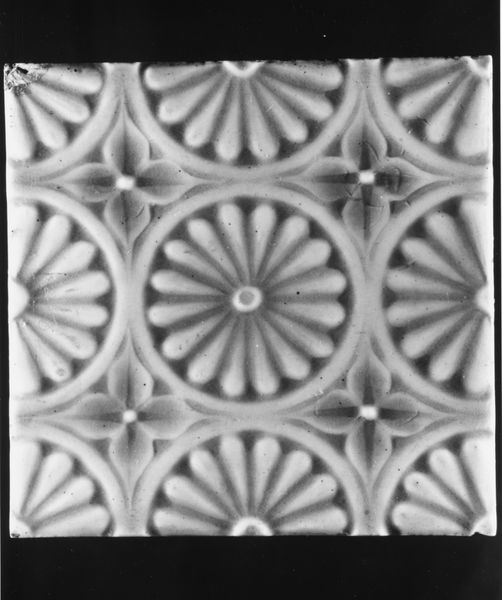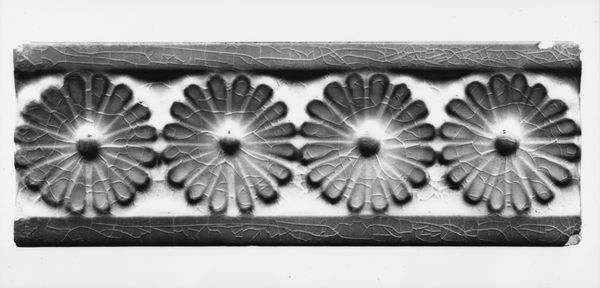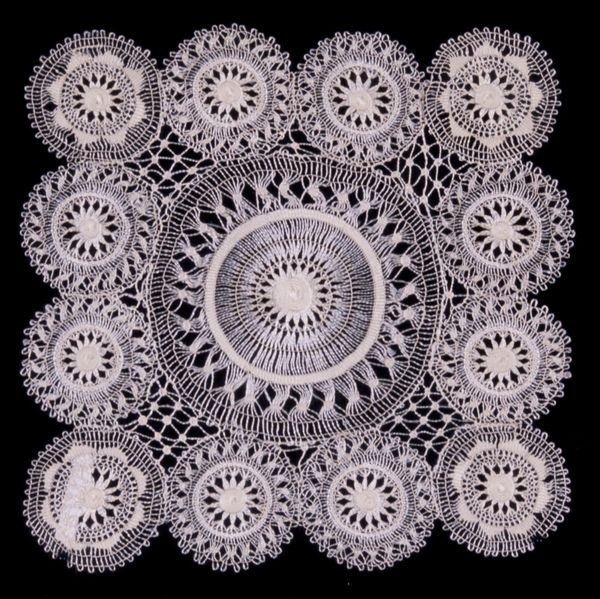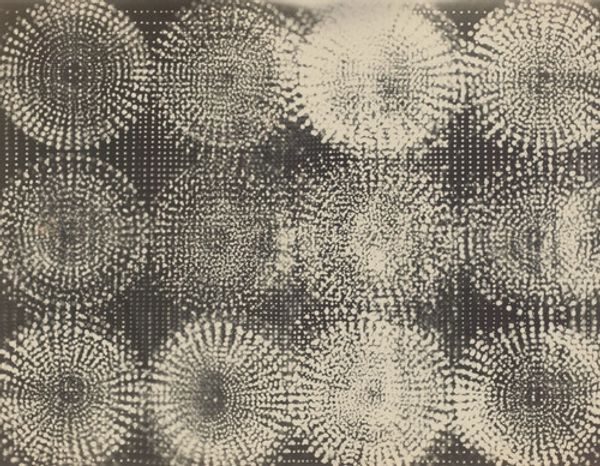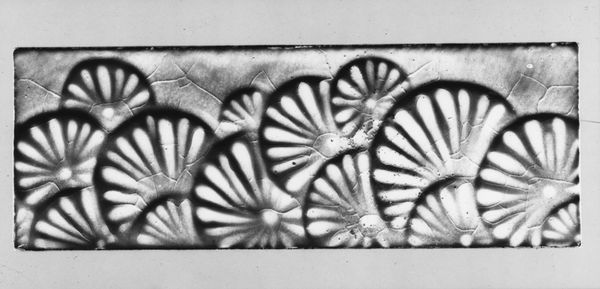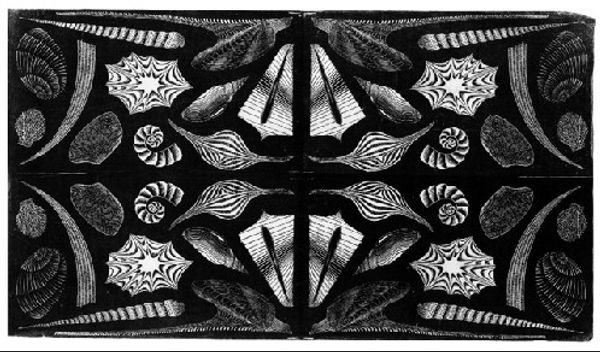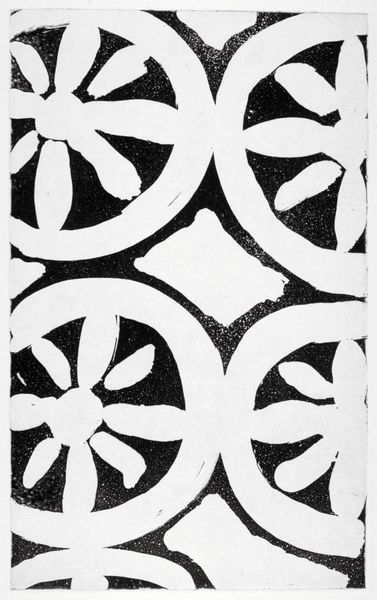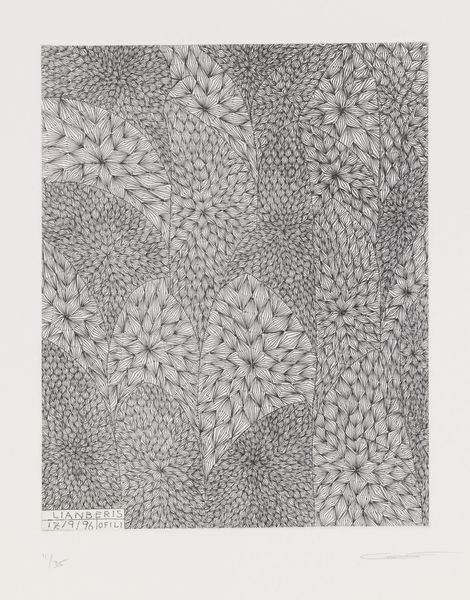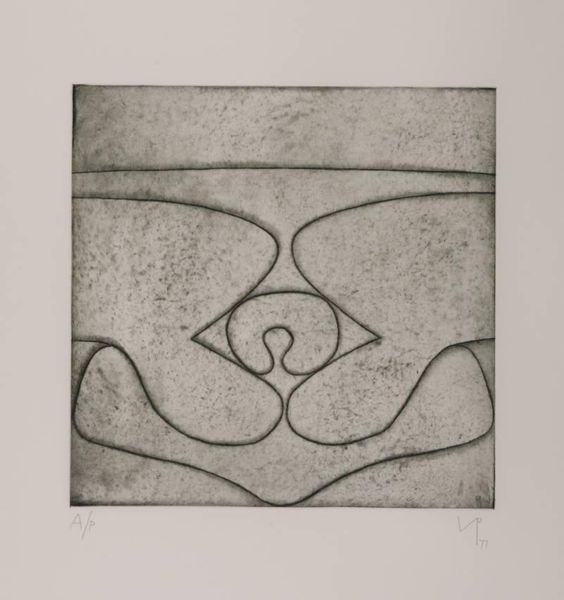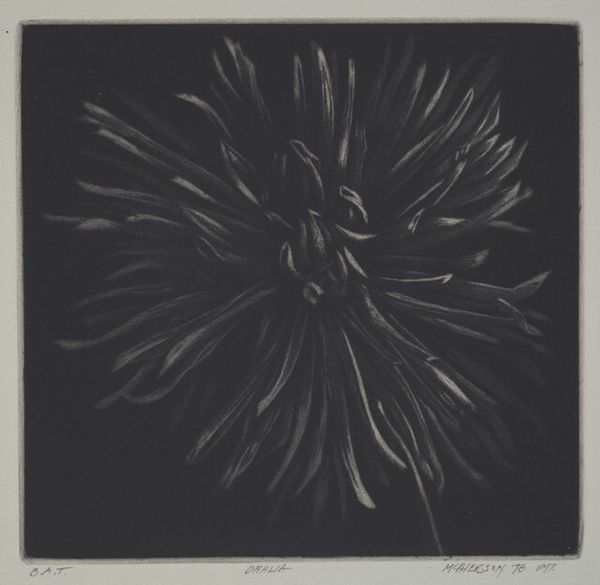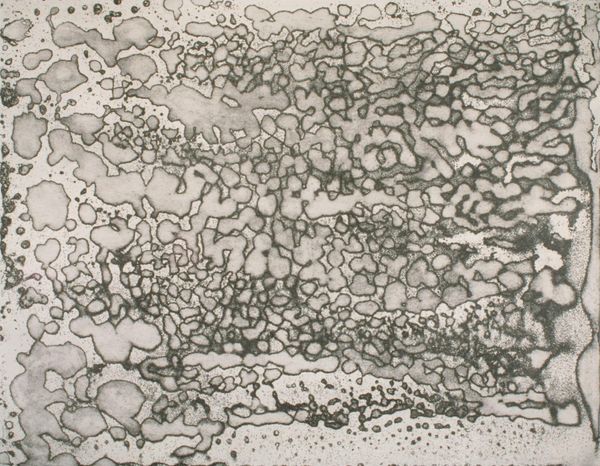
relief, ceramic
#
relief
#
ceramic
#
geometric
#
carved
#
decorative-art
Dimensions: 4 3/16 x 4 3/16 x 3/8 in. (10.6 x 10.6 x 1 cm)
Copyright: Public Domain
Curator: Looking at this ceramic tile, created by J. and J.G. Low Art Tile Works between 1881 and 1885, it strikes me how relevant such decorative arts remain. Editor: I find it subtly unsettling. There’s a sense of overwhelming repetition with those geometric patterns and circular blooms – or are they fungal growths? It definitely gives me pause. Curator: Well, such ambiguity makes it compelling. Decorative arts in the 19th century provided a crucial creative outlet and income for many women. Understanding how institutions like the Low Art Tile Works shaped production gives context to this artwork’s origins in post-Civil War America. They really led the way, offering classes for women. Editor: It's interesting to view the artistic intention through the lens of that historical period. There’s a tactile quality too, you know? One can almost feel the coolness and smoothness of the ceramic material, carved in relief. Thinking of who might’ve created and acquired this makes the piece more poignant. Curator: Precisely! We must understand the craftsmanship and recognize that objects we see as simply decorative or domestic often held immense social value and symbolism for both their creators and owners. Such artifacts could carry radical notions, representing female agency in a restrictive socio-political landscape. Editor: Agreed. Perhaps that tension—between perceived beauty and a creeping sense of the uncanny—mirrors the complexities women artists confronted at that time. Decorative, yet challenging conventions through their mere presence in the professionalized artistic sphere. Curator: Yes, the “decorative” belies a deep negotiation with prevailing societal norms. The work invites reflection on labor, gender, and the art market dynamics in a burgeoning industrialized society. Editor: Right. After taking this all into consideration, I see how understanding an artwork through multiple perspectives really enhances our interpretation. The history, context, symbolism. All necessary components. Curator: Precisely! Viewing it only aesthetically reduces the piece to simple decoration. And with more insights, the beauty becomes a celebration of collective and individual empowerment.
Comments
No comments
Be the first to comment and join the conversation on the ultimate creative platform.
